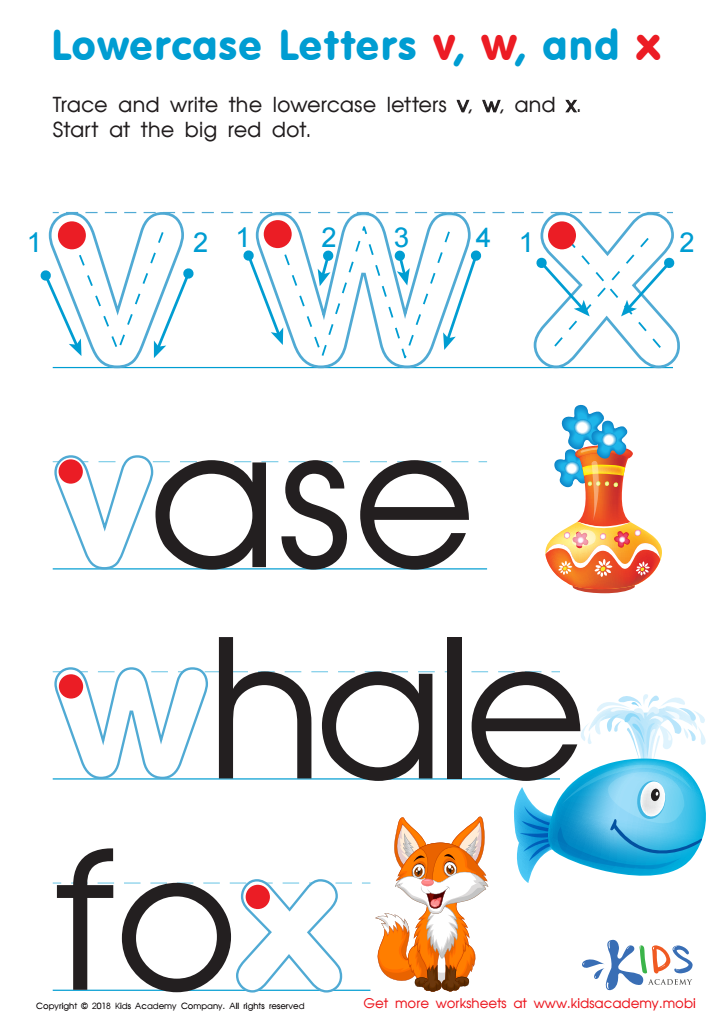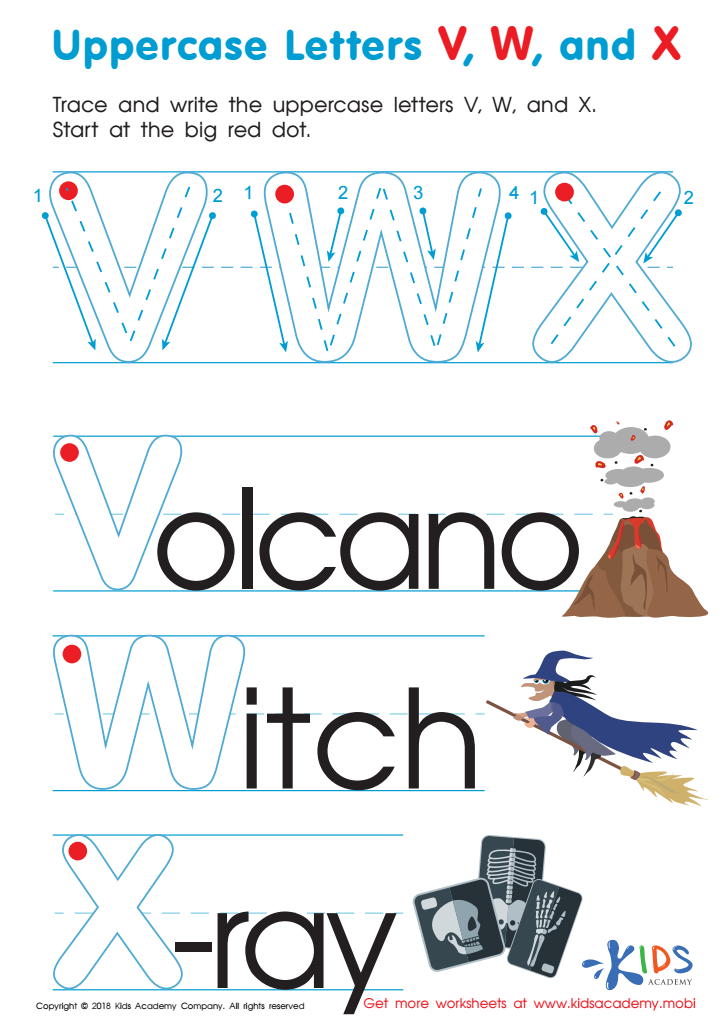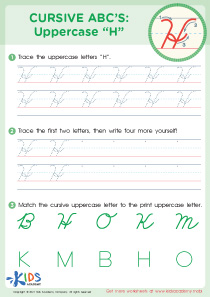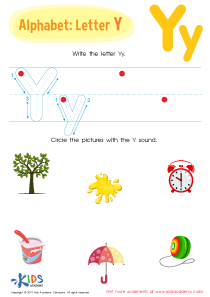Upper & Lowercase Letters Worksheets for Ages 5-8 - Page 3
50 filtered results
-
From - To


Lowercase Letters v w x Worksheet


Uppercase Letters V, W, and X Worksheet
Understanding uppercase and lowercase letters is crucial for the early literacy development of children aged 5-8. At this formative stage, children are beginning to grasp the fundamentals of reading and writing. Here's why parents and teachers should care:
-
Alphabet Recognition: Differentiating between uppercase and lowercase letters helps children recognize and name all the letters of the alphabet, a foundational literacy skill.
-
Reading Fluency: Proficient reading requires the ability to recognize words quickly and accurately. Since books and materials primarily use lowercase letters, but proper nouns and the beginning of sentences are uppercase, understanding both is key to fluent reading.
-
Writing Skills: Learning both uppercase and lowercase letters enables children to write sentences correctly. Proper use of capitalization is essential in developing neat, legible, and correctly formatted writing.
-
Head Start in Learning: Early mastery of upper and lowercase letters gives children a significant advantage as they advance to more complex literacy skills like spelling, grammar, and even cursive writing.
-
Self-confidence: Successfully learning to differentiate and use these letters builds a child's confidence in their reading and writing abilities, fostering a positive attitude towards learning.
Parents and teachers should prioritize this aspect of literacy to support children in becoming effective and confident communicators.

 Assign to the classroom
Assign to the classroom








